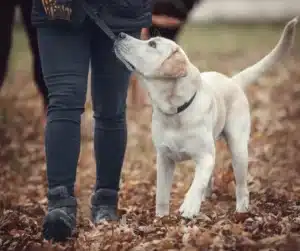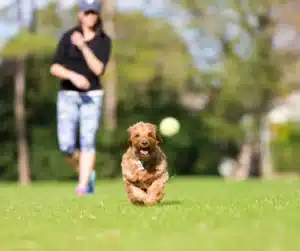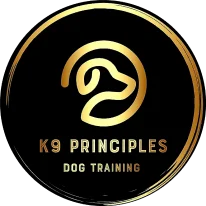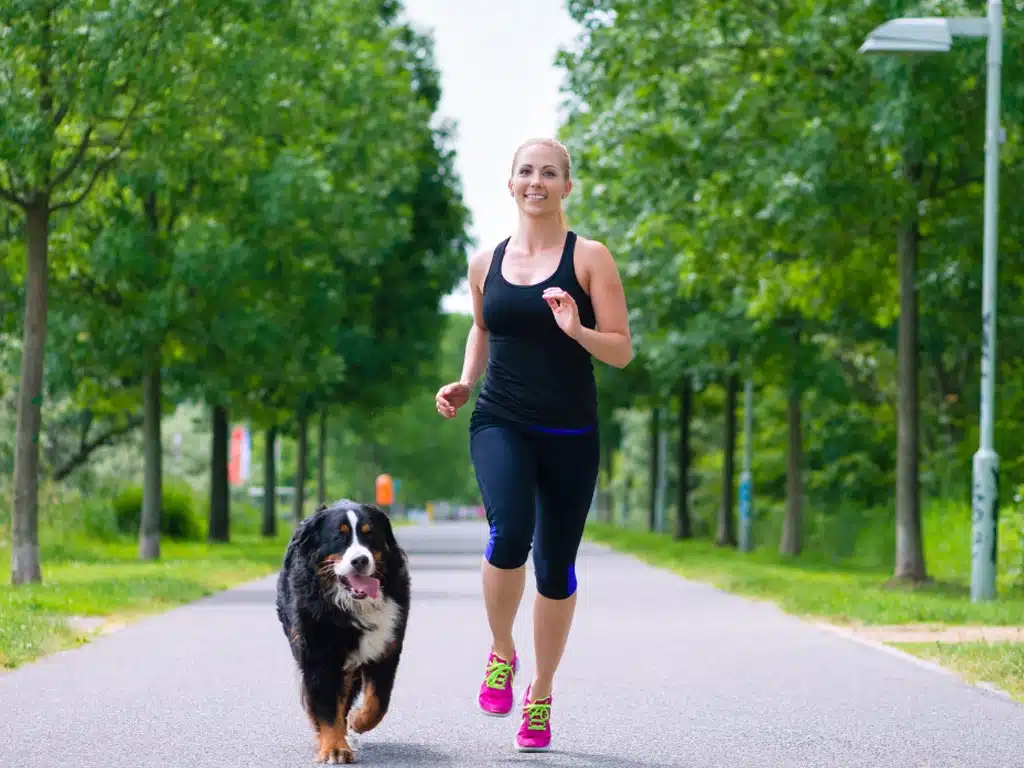Unlock the Freedom: Mastering Off-Leash Dog Training for Unleashed Joy and Safety
 Embarking on a journey to teach your dog off-leash dog training is not just an investment in their freedom; it’s a pathway to enriching the bond between you and your pet, allowing them to explore the world safely and freely. It’s easy to imagine the sheer joy of a dog racing across an open field, their fur caressed by the breeze, without the constraint of a leash. This idyllic scenario is what many dog owners dream of for their pets. Unfortunately, this dream remains unfulfilled for many, as their dogs lack the necessary training to be dependable when off-leash. If your dog is unable to venture beyond the confines of a leash, it’s time to consider off-leash dog training seriously.
Embarking on a journey to teach your dog off-leash dog training is not just an investment in their freedom; it’s a pathway to enriching the bond between you and your pet, allowing them to explore the world safely and freely. It’s easy to imagine the sheer joy of a dog racing across an open field, their fur caressed by the breeze, without the constraint of a leash. This idyllic scenario is what many dog owners dream of for their pets. Unfortunately, this dream remains unfulfilled for many, as their dogs lack the necessary training to be dependable when off-leash. If your dog is unable to venture beyond the confines of a leash, it’s time to consider off-leash dog training seriously.
Building the Foundation: On-Leash Training
 The cornerstone of successful off-leash dog training lies in a solid on-leash training regimen. This foundational step typically begins in our structured group class using positive reinforcement methods. Group classes offer the added benefit of socializing your dog with others, a vital component for ensuring they remain calm and focused in the presence of other dogs when off-leash. It’s critical that these on-leash skills are not confined to the training environment but are extended to various real-world settings to ensure your dog can adapt its behaviour accordingly.
The cornerstone of successful off-leash dog training lies in a solid on-leash training regimen. This foundational step typically begins in our structured group class using positive reinforcement methods. Group classes offer the added benefit of socializing your dog with others, a vital component for ensuring they remain calm and focused in the presence of other dogs when off-leash. It’s critical that these on-leash skills are not confined to the training environment but are extended to various real-world settings to ensure your dog can adapt its behaviour accordingly.
Key skills for off-leash readiness include:
- Recall Command: A reliable recall command is arguably the most critical aspect of off-leash training. It ensures that your dog will return to you despite distractions. Training your dog to respond to a recall command while on a leash sets the stage for off-leash reliability. A solid recall is a lifesaver and should be your top priority with your dog’s training.
- Heel Command: Teaching your dog to walk calmly by your side, rather than pulling ahead or lagging behind, is foundational. The heel command helps maintain control over your dog’s movements and ensures their attention remains on you, even in distracting environments.
- Sit and Stay Commands: These commands are essential for managing your dog’s behaviour in various situations. A dog that can sit and stay on command is easier to control and safer to have in public spaces, whether on or off-leash.
- Focus and Attention: Training your dog to maintain focus on you, even in the presence of distractions, is vital. This skill is developed through exercises that encourage your dog to check in with you frequently, building a habit of seeking guidance and awaiting cues.
Implementing On-Leash Training in Real-World Scenarios
 Once the basic commands are firmly in place, the next step involves generalising these behaviours to different environments. This means practising in a variety of settings outside the controlled environment of a training class or your home. Parks, busy streets, and pet-friendly stores provide excellent opportunities for your dog to adapt their training to real-world distractions. This phase is crucial for reinforcing their learning and ensuring that the behaviours are not just confined to the training ground but are deeply ingrained and readily accessible in any situation.
Once the basic commands are firmly in place, the next step involves generalising these behaviours to different environments. This means practising in a variety of settings outside the controlled environment of a training class or your home. Parks, busy streets, and pet-friendly stores provide excellent opportunities for your dog to adapt their training to real-world distractions. This phase is crucial for reinforcing their learning and ensuring that the behaviours are not just confined to the training ground but are deeply ingrained and readily accessible in any situation.
The Importance of Consistency and Patience
Consistency is key in on-leash training. It’s essential to practice regularly and to use consistent commands and cues. This consistency helps your dog understand what is expected of them and builds a reliable response to your commands. Patience, too, cannot be overstated; every dog learns at their own pace, and recognising and respecting this individual learning curve is crucial for a positive training experience.
Transitioning to the Real World Off Leash
The transition to off-leash training in public spaces is a significant step that requires meticulous planning and adherence to local regulations regarding dogs. Begin by identifying legally permissible areas for off-leash activities. Starting in low-distraction environments with a long line attached to your dog allows your dog to adjust to the new freedoms without becoming overwhelmed while you still maintain control of your dog.
Initial Steps in Public Areas: With your dog on a long line, reintroduce the basic commands and behaviours learned during the secure area training. This repetition solidifies their understanding and response in new contexts.
Gradual Exposure to Distractions: As your dog becomes more comfortable and reliable in responding to commands in public areas, gradually introduce environments with higher levels of distraction. This incremental approach helps build your dog’s confidence and ensures they remain focused on you despite external stimuli.
Monitoring and Adjusting Training: It’s crucial to closely monitor your dog’s behaviour and progress, adjusting the training intensity and complexity based on their responses. If you notice any regression, it may be necessary to return to more controlled settings to reinforce the training.
Advanced Off-Leash Training: Once your dog demonstrates consistent reliability, even in the presence of significant distractions, you can begin to reduce the use of the long line, transitioning to full off-leash training. It’s essential to maintain a positive and encouraging approach, using high-value rewards to reinforce desired behaviours.
Believe the Dog
Dogs are really good at letting us know when they understand what we’re asking them to do. They can show us they understand by the way they act or react to our cues and expectations. Believing your dog and taking a step back when necessary so they can be successful makes our bond with them even stronger and our time together more enjoyable.
Safety and Ethical Considerations
While off-leash freedom offers numerous benefits, it’s essential to always prioritise safety and ethical considerations. Not all environments are suitable for off-leash activities, and it’s crucial to respect local laws, wildlife, and other people and pets in the area. Always be prepared to leash your dog if the situation warrants it, ensuring their safety and the safety of others. Always be your dog’s advocate and make their safety your top priority.
The Role of Breed and Temperament
It’s important to acknowledge that some dogs, due to their breed or temperament, may find off-leash training more challenging. Dogs bred for specific tasks, such as herding or hunting, may have instincts that influence their off-leash behaviour. However, with patience, consistency, and the right training techniques, most dogs can enjoy the benefits of off-leash freedom responsibly.
The Role of Specialized Private Training

Off-leash dog training is a rewarding journey that can greatly enhance the quality of life for both you and your dog. By building a solid foundation, generalising skills across diverse environments, and carefully transitioning to real-world settings, you can prepare your dog for the joys and freedoms of off-leash exploration. Always remember to train responsibly, prioritising safety and respect for the community and environment. With dedication and the right approach, off-leash adventures can become a fulfilling part of your shared experiences with your dog.
FAQs
-
A1. It’s advisable to begin foundational on-leash training as early as possible, typically when your dog is a puppy. However, the transition to off-leash training should only commence once your dog has mastered on-leash commands and demonstrates reliable recall and focus. This can vary depending on the individual dog but usually starts from around 6 months of age, after they have received all necessary vaccinations and have begun socialisation.




